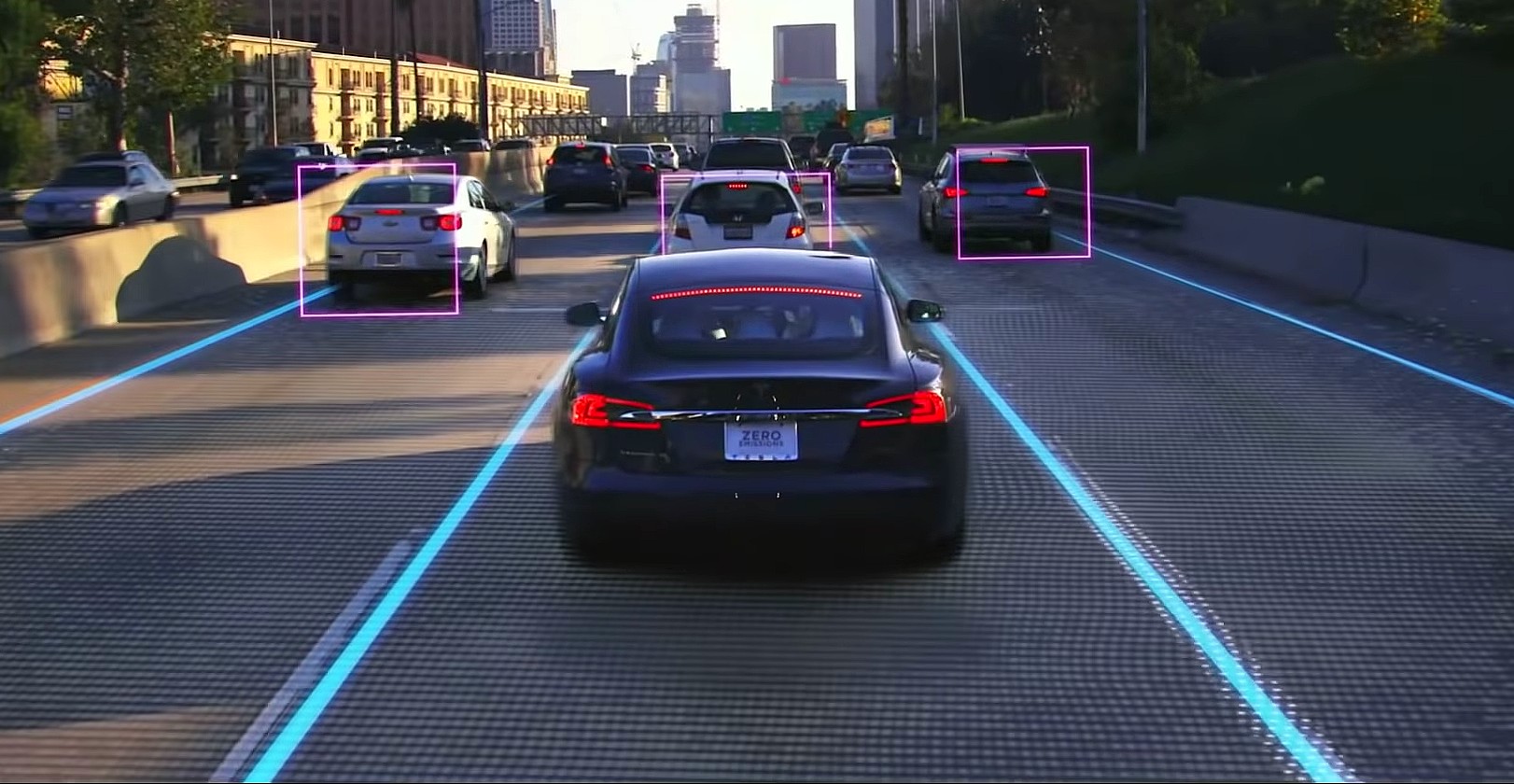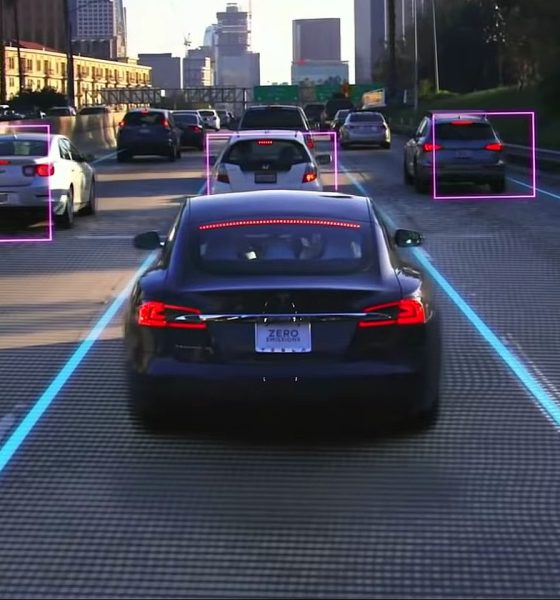

Investor's Corner
Tesla (TSLA) Robotaxi’s influence on price targets is already taking effect
Tesla (NASDAQ: TSLA) received a boosted price target from Morgan Stanley’s Adam Jonas this morning from $272 to $333. The new, raised outlook is based on Tesla’s Robotaxi fleet, which Jonas believes shows extreme upside potential for the automaker through the next ten years.
Jonas holds a 51% success rate and an average return of 8.8%, according to TipRanks.com.
In a note to investors, Jonas describes a new, more positive outlook for Tesla’s planned ridesharing service, which he believes shows tremendous potential compared to Morgan Stanley’s previous forecasts.
“We believe that the company is in a better position to deploy its ride-hail/transportation as a service business faster and more profitably than our previous forecast,” Jonas writes to investors in a note. “Reductions in the price of the car and battery, improvements in the EV charging infrastructure, insurance costs, residual value retention, and other factors have also increased the economic inputs of our Mobility model for Tesla.”
The announcement of Jonas’ price target boost comes just days after Tesla CEO Elon Musk announced that a Beta of the company’s Full Self-Driving suite would be released “in a few weeks.” It turns out that a very limited number of people will receive the capability on Tuesday, a day ahead of the company’s Q3 Earnings Call.
“Limited FSD beta releasing on Tuesday next week, as promised. This will, at first, be limited to a small number of people who are expert & careful drivers,” Musk said in a Tweet.
If the self-driving Beta program yields positive results, Tesla could launch its Robotaxi program before the end of the year, matching Musk’s expectations from early 2020, when he stated it would be ready by 2021. “I think we could see robotaxis in operation with network fleet next year. Not in all markets, but in some,” he said.
With Tesla’s record quarter in deliveries and production, Morgan Stanley also adjusted its forecast of how many cars will use the autonomous ride-hailing platform.
“We forecast a launch of 1,000 cars (from the existing fleet) in Tesla Mobility by 2021, rising to 500k cars by 2030, which would account for 2.7% of our Tesla global fleet estimate (18.6mm units) by that year. Our previous assumption for the Tesla Mobility fleet was 240k units by 2030,” Jonas wrote. “We assume $45,000 per cost car (vs. $60k previously) and a 7-year useful life, and other savings, driving our exit OP margin of Tesla mobility to 14.7% (10.4% previously). We use a 10% WACC (11% previously) and a 4% terminal growth rate (2% previously) implying an exit PE multiple of 17.3x (11.3x previously). Taken together, our valuation of Tesla Mobility rises to $42bn ($41/share) vs. $7.3bn ($7/share) previously.”
With increased production rates in the U.S., along with a new facility being built in Texas, Tesla will have more than enough opportunities to bring a new wave of ride-sharing to the United States. Eventually, the service will make an international debut, but this depends on regulatory permissions that vary in each market.
Jonas’ $333 price target is met with a $716 bull case price target, and a $108 bear case.
At the time of writing, TSLA shares were trading at $452.45, up about .8% for the session.
Disclaimer: Joey Klender is a TSLA Shareholder.

Investor's Corner
Tesla stock closes at all-time high on heels of Robotaxi progress

Tesla stock (NASDAQ: TSLA) closed at an all-time high on Tuesday, jumping over 3 percent during the day and finishing at $489.88.
The price beats the previous record close, which was $479.86.
Shares have had a crazy year, dipping more than 40 percent from the start of the year. The stock then started to recover once again around late April, when its price started to climb back up from the low $200 level.
This week, Tesla started to climb toward its highest levels ever, as it was revealed on Sunday that the company was testing driverless Robotaxis in Austin. The spike in value pushed the company’s valuation to $1.63 trillion.
Tesla Robotaxi goes driverless as Musk confirms Safety Monitor removal testing
It is the seventh-most valuable company on the market currently, trailing Nvidia, Apple, Alphabet (Google), Microsoft, Amazon, and Meta.
Shares closed up $14.57 today, up over 3 percent.
The stock has gone through a lot this year, as previously mentioned. Shares tumbled in Q1 due to CEO Elon Musk’s involvement with the Department of Government Efficiency (DOGE), which pulled his attention away from his companies and left a major overhang on their valuations.
However, things started to rebound halfway through the year, and as the government started to phase out the $7,500 tax credit, demand spiked as consumers tried to take advantage of it.
Q3 deliveries were the highest in company history, and Tesla responded to the loss of the tax credit with the launch of the Model 3 and Model Y Standard.
Additionally, analysts have announced high expectations this week for the company on Wall Street as Robotaxi continues to be the focus. With autonomy within Tesla’s sights, things are moving in the direction of Robotaxi being a major catalyst for growth on the Street in the coming year.
Elon Musk
Tesla needs to come through on this one Robotaxi metric, analyst says
“We think the key focus from here will be how fast Tesla can scale driverless operations (including if Tesla’s approach to software/hardware allows it to scale significantly faster than competitors, as the company has argued), and on profitability.”

Tesla needs to come through on this one Robotaxi metric, Mark Delaney of Goldman Sachs says.
Tesla is in the process of rolling out its Robotaxi platform to areas outside of Austin and the California Bay Area. It has plans to launch in five additional cities, including Houston, Dallas, Miami, Las Vegas, and Phoenix.
However, the company’s expansion is not what the focus needs to be, according to Delaney. It’s the speed of deployment.
The analyst said:
“We think the key focus from here will be how fast Tesla can scale driverless operations (including if Tesla’s approach to software/hardware allows it to scale significantly faster than competitors, as the company has argued), and on profitability.”
Profitability will come as the Robotaxi fleet expands. Making that money will be dependent on when Tesla can initiate rides in more areas, giving more customers access to the program.
There are some additional things that the company needs to make happen ahead of the major Robotaxi expansion, one of those things is launching driverless rides in Austin, the first city in which it launched the program.
This week, Tesla started testing driverless Robotaxi rides in Austin, as two different Model Y units were spotted with no occupants, a huge step in the company’s plans for the ride-sharing platform.
Tesla Robotaxi goes driverless as Musk confirms Safety Monitor removal testing
CEO Elon Musk has been hoping to remove Safety Monitors from Robotaxis in Austin for several months, first mentioning the plan to have them out by the end of 2025 in September. He confirmed on Sunday that Tesla had officially removed vehicle occupants and started testing truly unsupervised rides.
Although Safety Monitors in Austin have been sitting in the passenger’s seat, they have still had the ability to override things in case of an emergency. After all, the ultimate goal was safety and avoiding any accidents or injuries.
Goldman Sachs reiterated its ‘Neutral’ rating and its $400 price target. Delaney said, “Tesla is making progress with its autonomous technology,” and recent developments make it evident that this is true.
Investor's Corner
Tesla gets bold Robotaxi prediction from Wall Street firm
Last week, Andrew Percoco took over Tesla analysis for Morgan Stanley from Adam Jonas, who covered the stock for years. Percoco seems to be less optimistic and bullish on Tesla shares, while still being fair and balanced in his analysis.

Tesla (NASDAQ: TSLA) received a bold Robotaxi prediction from Morgan Stanley, which anticipates a dramatic increase in the size of the company’s autonomous ride-hailing suite in the coming years.
Last week, Andrew Percoco took over Tesla analysis for Morgan Stanley from Adam Jonas, who covered the stock for years. Percoco seems to be less optimistic and bullish on Tesla shares, while still being fair and balanced in his analysis.
Percoco dug into the Robotaxi fleet and its expansion in the coming years in his latest note, released on Tuesday. The firm expects Tesla to increase the Robotaxi fleet size to 1,000 vehicles in 2026. However, that’s small-scale compared to what they expect from Tesla in a decade.
Tesla expands Robotaxi app access once again, this time on a global scale
By 2035, Morgan Stanley believes there will be one million Robotaxis on the road across multiple cities, a major jump and a considerable fleet size. We assume this means the fleet of vehicles Tesla will operate internally, and not including passenger-owned vehicles that could be added through software updates.
He also listed three specific catalysts that investors should pay attention to, as these will represent the company being on track to achieve its Robotaxi dreams:
- Opening Robotaxi to the public without a Safety Monitor. Timing is unclear, but it appears that Tesla is getting closer by the day.
- Improvement in safety metrics without the Safety Monitor. Tesla’s ability to improve its safety metrics as it scales miles driven without the Safety Monitor is imperative as it looks to scale in new states and cities in 2026.
- Cybercab start of production, targeted for April 2026. Tesla’s Cybercab is a purpose-built vehicle (no steering wheel or pedals, only two seats) that is expected to be produced through its state-of-the-art unboxed manufacturing process, offering further cost reductions and thus accelerating adoption over time.
Robotaxi stands to be one of Tesla’s most significant revenue contributors, especially as the company plans to continue expanding its ride-hailing service across the world in the coming years.
Its current deployment strategy is controlled and conservative to avoid any drastic and potentially program-ruining incidents.
So far, the program, which is active in Austin and the California Bay Area, has been widely successful.








